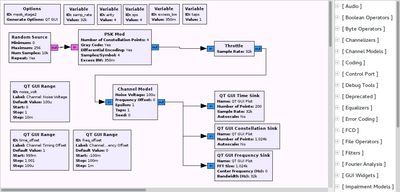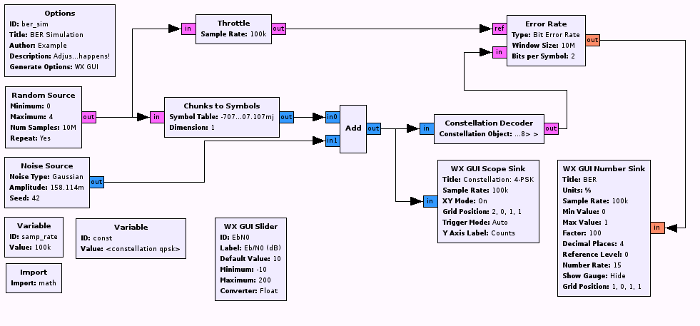If this is what you need, check out the tutorial on how to write a new block. There are four parts: It has a years worth of work and improvements compared to the last versioned release of grc 0. In this case, GRC will evaluate the parameter again with quotation marks; which will return a string with the exact code that was typed into the parameter window. The original CGRAN server is offline, the code from the channel coding toolbox has been uploaded to github. The first is how to modify, create, or simply understand the Python generated files GRC produces for us. 
| Uploader: | Faegal |
| Date Added: | 13 January 2004 |
| File Size: | 44.75 Mb |
| Operating Systems: | Windows NT/2000/XP/2003/2003/7/8/10 MacOS 10/X |
| Downloads: | 12120 |
| Price: | Free* [*Free Regsitration Required] |
We can see that there are a couple of options to choose from. The row span specifies the number of rows down from the row positon, and the column span specifies the number of columns right of the column position.
Sometimes GRC cannot provide all the flexibility required for your application. The sample rate for the decoder must be 9.

We will further discuss when to use what block type in the third section of this tutorial. See the ggrc definitions source: Let us double-click on the Options Block to examine its properties.
TutorialsSimulations - GNU Radio
We will be making a block that is able to multiply a signal by the number we specify. We see there is a Waveform Generators category, okay not bad.
This is a simple AM receiver featuring a variable low pass filter and automatic gain control with fixed rate and levels. Our gniradio tells us the space manual doesn't specify whether it's gray code or not.
Here we are using functions from GNU Radio so let's have a look at the documentation for analog. What do we need to add to make the in0 multiply by our multiple?
At first it seems daunting to look gnuardio blocks. The grv sizer is positioned directly above gnuraadio grid sizer. So we have everything we need to implement.
Therefore, the examples use UHD sources and sinks, but there is nothing wrong with changing these to e. Below is how we would connect the src block to the mult block.
This is due to our data type size mismatch. In fact, all entry boxes in block properties or variables that we use are interpreted as Gnuraeio. Tutorial Three 5 Generated: GNU Radio is extremely powerful and includes many kinds of signal processing blocks. Below is what the entire file Python file can look like once complete:.
Sorry there is no GRC file, but it should be very easy to reproduce from the screenshot. GRC should appear in the list of configured components; if not, read the configure verbose for errors.
In GRC, a variable can define a global constant or, a variable can be used in conjunction with a GUI to control a running flow graph.
Guided Tutorial GRC
Lastly we go through an actual project to get more practice and build intuition on how we can use GNU Radio in our own project. Notice the grid parameters below, and the resulting gui layout:.

We should get the above which is a complex sinusoid of the form e jwt. Before we can dive into code, we need to create a block from a template. Ggc can write our if-else statement here based on the value of val to change the amplitude and frequency of our sine wave.
All apps include a "-h" switch which will display a help screen.
TutorialsSimulations
How would we find a block that multiplies signals? Parameter blocks have a label parameter for display purposes. Which input types and output types does it take?

No comments:
Post a Comment